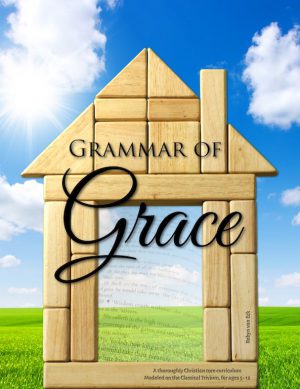Photo by Aaron Burden on Unsplash
Grammar of Grace does make one intentional change to the old school Noah Webster-style approach.
It incorporates lots and lots of scripture!
Webster loved the Bible, and featured it in the Blue Back Speller (and in his incomparable Dictionary). But on the whole, there aren’t all that many scripture in that sweet little volume.
This goes back to what we talked about in Part 1, that there are no instructions the Webster’s Speller (nor in the New England Primer or other early books of the sort). But after a few years of using it to teach my children, and reading old books that speak of how children were educated in those days, it all makes sense.
The idea I get is that children in early America grew up in homes surrounded by literacy. And when I speak of literacy, keep in mind that there was no children’s literature in those days; the entire genre of children’s books is a very recent invention. Children were immersed in a culture of deep literacy, of the same books their parents were reading.
To start, the Bible was read in the home (not children’s story “bibles”). Children heard the real Bible being read, either the Geneva Bible or King James—which are practically the same—daily, in their homes.
But other literature was also read in the home. Two of the standard texts that people would have, after the Bible, were John Bunyan’s The Pilgrim’s Progress and John Foxe’s Actes and Monuments (also known as Foxe’s Book of Martyrs). During their free time in the evenings, after the work of the day was done, people did not have televisions or facebook. They often opened a good book and read together as a family.
This comes back to the point again, that there is so much about the Blue Back, and the New England Primer, and the other books from that era, that is left unsaid. Teachers and parents knew how to use these books, so there are no instructions in them! What is unsaid here is that parents and teachers were giving the children scriptures and other good literature to read, copy, and memorize; so Webster did not see a need to fill his Speller with scriptures.
Today, when we teach children to read, we teach from a reading method (which should be a true phonics method), and we also give them lots of other books to read, to put what they’re learning into practice—Dr. Seuss, Eric Carle, Sandra Boynton, Touch & Feel, etc. Just so, when early Americans taught their children to read, they taught from a reading method, and they would have also given their children lots of other books to read, to put what they were learning into practice—Matthew, Mark, Luke, John, The Pilgrim’s Progress, Foxe’s Book of Martyrs, etc.
Grammar of Grace spells out how to incorporate the Bible—without interpretation or study questions, just the Bible. Memorization, reading the whole Bible, and student Bible reading are not only not assumed—they form the foundation for teaching reading, writing, spelling, language arts, history, and literary excellence.
Grammar of Grace is a tool to help a generation of Christian parents relearn the education method of our forefathers. The vision behind Grammar of Grace is not to add yet another approach to the homeschooling pantheon; it’s a practical plan to help Christian homeschoolers find our way back to a method that has been lost.
Have you used the Bible for “reading practice” with your children? How has that worked in your home?
Thanks for dropping by; please keep us in prayer!
Recommended Resource
-

Grammar of Grace
$89.00 – $148.00 Select options This product has multiple variants. The options may be chosen on the product page

